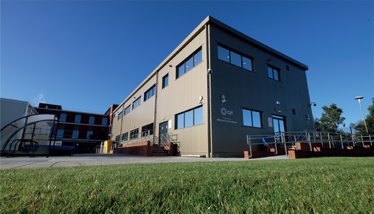Center of Excellence Opens for RNA
UK-based center will have capacity for RNA therapeutic production for clinical trials and potential future health emergencies
Stephanie Vine | | 4 min read | News

CPI has opened an RNA Centre of Excellence in Darlington, UK, which it claims will “drive UK leadership in pandemic preparation and RNA therapeutic innovation.” The center, which helps companies to develop new products and processes by providing access to facilities and expertise, has received £26 million in funding from the UK government.
“Clearly, during the COVID-19 pandemic we saw the potential of RNA vaccines to bring a health emergency under control. Even before the pandemic, scientists and researchers were exploring how RNA vaccines and therapeutics could unlock our ability to treat other infectious and non-infectious diseases such as cancer and HIV,” says Julie Anderson, Head of the RNA Centre of Excellence. “We learnt so much about the capability of RNA during the pandemic and there is now a real focus on how we can best utilize this emerging technology to help tackle some of the biggest threats to health.”
Despite the expertise gained with RNA during the pandemic, there are still specific manufacturing challenges. Specialized reagents are required to produce an RNA molecule, such as enzymes to synthesize RNA from the template; linearised DNA plasmids; reagents to cap the RNA to avoid triggering in vivo RNA degradation pathways; specialist lipids to create lipid nanoparticles; and triphosphate bases. Processes need to be designed to ensure that RNase activity is excluded to avoid degrading the RNA as soon as it is made, which necessitates careful choice of raw materials. Finally, since the formation of lipid nanoparticles requires the use of ethanol as a solvent, the steps involving lipid nanoparticle formation also need to be designed to handle ethanol, which is very different to standard biologics processes.
The center aims to help companies overcome some of the challenges. It has the capabilities to develop and produce RNA and lipid nanoparticle encapsulated messenger vaccines and therapies – for clinical trials and future health emergencies (up to 100 million vaccine doses if necessary). At launch, it is the only open access facility in the UK capable of producing these types of therapies.
The center will use disposable contact components throughout to eliminate the potential for cross contamination and contamination with RNase activity, which would otherwise degrade the product produced. “The steps needed to generate LNPs from the RNA synthesized are the most specialized part of the process and need to be designed to handle the ethanol solvent required for lipid nanoparticle production,” says Anderson.
CPI was heavily involved in the UK government’s vaccine taskforce during the pandemic to help produce an RNA vaccine candidate, and is now working with several partners on RNA-related projects, including an saRNA flu vaccine (in collaboration with VaxEquity).
“RNA technology is a very flexible platform approach to making a therapeutic. For example, the same basic process can, depending on the input sequence template, be used to make an RNA for a vaccine, or an oncology target, or to treat a disease like haemophilia,” says Anderson. “One example of a novel application is the use of RNA to treat heart disease. The adult heart cannot regenerate after damage, which makes heart disease the leading cause or mortality worldwide. RNA-LNP is being investigated to deliver RNA to stimulate cardiomyocyte proliferation to achieving cardiac repair, promote cardiac regeneration, and thus treat heart disease.”
The billions of people treated with COVID-19 RNA vaccines has shown that RNA is a safe approach that can be rapidly scaled to treat large patient populations. According to Anderson, the platform nature of RNA technology could also make it potentially easier for vaccines to be developed for niche diseases, such as Marburg and plague – which have been difficult to prioritise for drug development because of the time and resources required.
Anderson says, “The sky really is the limit for RNA. This technology had a huge impact during the pandemic, and what is good for health is also good for society and good for the economy. If we can utilise this technology in other disease areas, we have a real chance at making a serious difference for individual patients, but the broader impact could be much, much greater.”

Making great scientific magazines isn’t just about delivering knowledge and high quality content; it’s also about packaging these in the right words to ensure that someone is truly inspired by a topic. My passion is ensuring that our authors’ expertise is presented as a seamless and enjoyable reading experience, whether in print, in digital or on social media. I’ve spent fourteen years writing and editing features for scientific and manufacturing publications, and in making this content engaging and accessible without sacrificing its scientific integrity. There is nothing better than a magazine with great content that feels great to read.



















